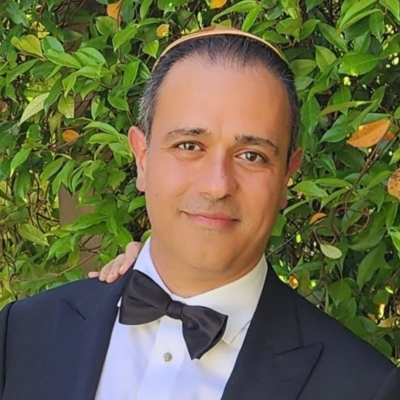18 Tips for Balancing SEO and User Experience in Website Content
Balancing SEO requirements with user experience is a critical challenge for today's website content creators, as confirmed by leading industry experts. This article presents 18 actionable tips that bridge the gap between technical optimization and engaging, human-centered content. From prioritizing user intent to implementing structured data, these strategies help content creators deliver value to both search engines and real people without sacrificing effectiveness on either front.
Present Critical Information First, Minimize Fluff
One of the reasons why LLMs have become so popular is that they give you concise answers, leaving out unnecessary fluff. A lot of articles that rank on Google do the opposite. The content slowly builds up to the core of the topic, often causing frustration & high bounce rates. Also, based on a study by the Neilson Norman Group, a large majority of users (79%), scan key information. Only 16% read it fully.
Based on the above insights, my approach to optimising pages is to minimise fluff. Present critical information first and add keywords in the natural flow of words. I also keep pargraphs short (for skimmability), use headers tags, jump navigation, bullet points and descriptive link anchors. Finally, I ensure the page has appropriate schema markup.
I've used the above formula for several ecommerce client websites. For instance, one client blog article that consistently ranked among the top three, had a very high bounce rate. After I refreshed the content and layout, using the above approach, the page saw a 23% reduction in bounce rate and began appearing in LLM-generated answers for multiple related search queries.

Start With User Intent, Then Layer
The truth? This is a false dichotomy that needs to die. When you optimize for users correctly, you're automatically optimizing for search engines—because Google's algorithm rewards exactly what users want.
Here's what I mean: Google makes money when people use their search engine and find what they're looking for. If users hate your content, bounce immediately, or don't engage—Google notices and ranks you lower. So the so-called "balance" isn't balancing at all—it's alignment.
How we achieve this alignment:
Start with user intent, then layer in technical optimization. We don't write for keywords and hope users like it. We write for users and strategically incorporate keywords where they naturally fit.
Use structure that serves both:
Clear H2 headers as questions? Users scan content easily. Google understands topical hierarchy.
Tables comparing options? Users get quick answers. Google pulls them into featured snippets.
FAQ sections? Users get immediate answers. Schema markup makes Google display them prominently.
Real example: Our Center Pivot Irrigation page
We completely reimagined an outdated blog post for a client selling center pivot irrigation systems. This page ranked on page 3. Here's how we aligned user needs with search optimization:
User-first approach:
Started with "What is center pivot irrigation?"—because that's what beginners genuinely need to know
Added comparison tables showing different system types—users need to understand options
Included "Why choose [client]?" section—addresses the buying decision users actually face
Added FAQ section answering real customer questions
Search optimization built in:
Target keywords: "center pivot irrigation," "pivot irrigation systems," "irrigation sprinkler systems"
Proper H1/H2 structure with keyword variations naturally incorporated
Schema markup: FAQ schema, Article schema, Organization schema
Internal links to related product pages and resources
Optimized meta descriptions addressing user search intent
The result: Within 3 months, moved from page 3 to page 1. Now ranks in top 3 positions for multiple high-volume commercial keywords. More importantly—conversion rate increased because users actually found the information helpful and trusted the company's expertise.

Prioritize Search Intent Before Technical Optimization
Finding the right balance between optimizing for search engines and users is one of the tricky parts of SEO. At Merchynt, we see it more as a conversation than just ticking off a checklist. Our strategy starts with understanding the user's search intent, and then we layer in the technical optimization. Take, for instance, our content about Paige by Merchynt and how it boosts Google Business Profile rankings. We steer clear of writing for algorithms. Instead, we focus on simplicity, education, and storytelling, making sure our keyword fits seamlessly into the content. One of our standout blog posts, "Quick Wins for Small Businesses: Improve Your Local SEO in 15 Minutes a Day," was written this way. We initially wrote it as a hands-on guide to empower readers to take meaningful action with Paige. Only after we had the draft ready did we go back to polish the headings, meta descriptions, and alt text for SEO. The outcome? That post ranks impressively for "local SEO software" and "Google Business Profile optimization," all while keeping a high average read time because people are genuinely interested in it. This approach works because Google's algorithms are increasingly favoring content that benefits users, which is exactly what our audience finds in Merchynt's educational materials. It's a testament to the idea that when you prioritize writing for humans first and optimizing second, you can succeed on both counts.

Balance Dual Metrics Without Compromise
I use Yoast SEO's dual-metric system to balance WordPress content for both search engines and readers. When creating a payment processing guide, my content initially scored well for SEO but poorly for readability.
Rather than compromising either aspect, I maintained keyword optimization while improving sentence structure, reducing passive voice, and adding transition words.
This balanced approach led to both longer time-on-page metrics and improved search rankings, proving that when content works for both algorithms and humans, everyone wins.

Write For Humans First, Structure Second
I believe the key to balancing SEO and user experience is remembering that search engines reward content people actually find useful. At Innovast Digital Marketing, I focus on writing for humans first, but with a structure that helps Google understand what the page is about.
For example, we recently rebuilt a bookkeeping firm's website. We optimized for terms like "outsourced bookkeeping in New England," but instead of forcing keywords, we told stories around real business challenges — like struggling to stay organized before tax time. It sounded natural, it resonated with readers, and it still checked every SEO box.
Within a few months, their organic traffic jumped nearly 50%, and they started getting more qualified leads. To me, that's the perfect balance, when search engines and people both love what they find.

Rebuild Content To Sound Human, Not
It's simple. SEO is about getting found, but user-focused content is what keeps people around. You need both, or neither works.
Our SEO team once worked on a website for a web hosting client and we hit a wall. Their old site ranked for lots of keywords but they had a high bounce rate. People were landing on the pages but quickly leaving. During our content audit, we quickly realized how much their copy was written more for search engines than for real humans. It was stuffed with keywords but didn't actually explain anything in a way people could connect with.
So we rebuilt their service pages with a simple goal to sound more human, not a robot. We kept the important keywords, but wrote them into natural sentences. We also compiled and added real user questions as headers and broke long paragraphs into shorter chunks with clear subheadings.
The result? Bounce rate dropped by 25+% in the first 3 months, and average time on page doubled. But the bigger win was that the client said leads were coming in more qualified and they were already educated by the site and ready to take the next step.

Combine Storytelling With Strategic Keyword Placement
SEO combined with user experience is rather like making tea. If it is too weak, it is flavorless; if it is too strong, it becomes bitter. The secret is to brew it for a duration long enough for the algorithm to appreciate it and for the visitor to enjoy it too. When I optimized my blog for Summit Breeze Tea, I did more than incorporate search terms for "Chinese loose-leaf tea" and "Gongfu brewing." I combined these with storytelling, leading the visitor from scents to ceremony to the sensation achieved with each draught. It pleased Google, but it held the visitor's attention.
And the lesson here is that it's essential to write for humans first, then to invite search engines to join the meal. By using metadata, headers, and key words, it is possible to set the stage for success, but it is only with a dash of empathy that it is possible to make SEO happen.
---
I hope this helps! If you want to get to know more details about me, please feel free to reach out below:
Name: Chris Lin
Title: Founder
My Website: https://summitbreezetea.com/
My LinkedIn: https://www.linkedin.com/in/chris-lin-42374a321/?locale=en_US
Headshot: https://drive.google.com/file/d/1rdnr580gi5uvZwG8BTwG15GHc97njjK/view?usp=drive_link

Use AI Tools To Refine Structure
I strongly believe, utilizing AI intelligently is the key to balancing between optimizing for users and search engines. In our company, we heavily rely on machine learning to understand user intent, topic relevance, and how good the engagement is.
You see, the content itself is always written for humans, but AI just helps us refine the content structure, its readability, and keyword flow, while the narrative remains authentic and value-driven.
We used NLP tools for one of the AI education pages to find relevant semantic gaps between user searches and our explanations. When we bridged those gaps with richer examples and AI-generated summaries, we witnessed a significant bounce in organic traffic almost nearly doubling it.

Map Keyword Intent To Emotional Needs
Balancing optimization for search engines and end users begins with the process we call "DUAL-INTENT MAPPING". It is our internal framework to combine SEO structure with human storytelling. Rather than writing for algorithms, we translate keyword intent into the emotional or practical need of the user. We begin with search data to get an idea of phrasing, then add tone and flow, followed by soundness as we all think real people process information.
We A/B test content in the same way we do layout and user experience, using engagement metrics such as scroll depth and time on page — if people stick around longer, search engines will too. The secret is earning trust with transparency, then signaling relevancy through clear structure and schema markup.
We once used Dual-Intent Mapping for a B2B SaaS client's blog refresh. The content was ranking but converting poorly. We recreated each article keeping conversational h1's, keyword-rich sub-topics and on-page links that build up an easy-to-read article with a moat of strength. Nature ascribe to it also organic love and hate, organic pity and other feelings.

Create Semantic HTML With Schema Integration
The first step in our approach involves organizing content through proper headings and brief paragraphs and quick page loading which benefits users and search engines. The development of our enterprise CMS implementation included creating Angular components from semantic HTML elements with schema.org metadata integration throughout the system. The system provided Google with necessary context information while maintaining a clean interface that users could easily navigate.
The team worked with the client to create sections that focused on specific topics which answered actual user inquiries instead of using excessive keyword loading. The website experienced continuous traffic growth while users spent more time on the site and made more conversions which demonstrated that proper website architecture enables both usability and search engine optimization to work together effectively.

Consider Traffic Source When Planning Pages
It's an extremely delicate balance! For us, it starts with a simple question - "how are our visitors reaching this page?". If we expect 90%+ of the traffic to be coming through a specific SEO search term, such as "fundraising video maker", then we build the page with that keyword at the forefront. It doesn't mean skimping on meaningful content, you still need to convert the users who reach the page, but it does place an added emphasis on getting your headers planned out and FAQs in line with search terms. Your hero text will probably just be the keyword from the URL. On the flip side, if you know that visitors will mostly be arriving from other pages on your site, or a marketing email, the messaging can entirely focus on the value props that you know sell your business or service.

Make SEO Earn Its Place Through
I start with intent and make SEO earn its place. At idietera.gr (Greek tutoring marketplace), our benchmark is whether a visitor can do three jobs fast: understand options, compare tutors and contact the right one.
1) Intent-first UX: A sub-120-word intro answers price/format/location; scannable H2s (cost, how to choose, online vs in-person); a prominent "Find Tutors near you" action above the fold. Tutor cards include unique micro-copy (credentials, availability) to avoid thin/duplicate content.
2) Technical quality: We cut LCP from ~3.8s to ~2.2s by inlining critical CSS, lazy-loading images, deferring non-essential JS, and trimming third-party scripts.
3) Search clarity: Descriptive headings, intent-driven internal links to sibling subjects/locations, structured FAQ (schema), normalized titles/meta.
Outcome: +18% organic clicks and +12% lead submissions in eight weeks.
My rule: if a change doesn't improve a real user task, we don't ship it - even if it looks "good for SEO."

Build Modular Content With Structured Data
I believe strong content MUST SERVE TWO MASTERS—users and algorithms. You can't sacrifice one for the other. Content that connects with people but also signals clearly to search engines has real staying power.
Here's one example: in a guide we published on "B2B lead scoring models," we built it to work on two levels. The layout was modular—summary boxes, clear visual paths, and numbered steps so readers could scan fast. Then we added structured data for "how-to," optimized headings with relevant keyword clusters, and linked each section to related resources using descriptive anchors. We also applied breadcrumb schema to help Google understand context and page depth. Over the first eight weeks, traffic climbed by just over 50%, people stayed on the page longer, and lead submissions improved by about 17%.
What matters most is serving the reader first, then setting up the content so search engines don't miss the point.

Automate Systems To Reduce Processing Time
One area where we were lagging behind in insurance workflow was claims processing and approvals. The delays were mainly due to our offline, manual documentation and verification system. Initially, it was going smoothly, but gradually, my team informed me we were getting a low renewal rate, which hinted at a serious customer dissatisfaction issue related to delays.
Our 6-month data showed 70% of our lost clients were those who had long claim settlements. Customers were lost not because of the outcomes but the long wait. This is when we hired an AI automation expert. He automated our internal live dashboard monitoring system, document verification, and claim tracking.
We set a few internal KPIs and held proper team training for faster processing. This helped us in two major ways: One, our claim resolution time reduced by a big margin of 59% and we also saw a sharp increase in word-of-mouth referrals.

Write Headlines For Humans, Metadata For
Letting Data Guide the Story
Initially, we created a guide to booking long-term accommodations for large-scale projects. It performed decently in terms of search rankings, but the conversions were unsatisfactory. While the guide may have pleased the algorithms, it certainly did not appeal to the users. I approached the revision from the perspective of a site manager crisscrossing job sites. Each section introduced a challenge, and each provided a solution. While all the H2s and alt texts still contained the same key phrases and main ideas, I shifted the tone from corporate to more understanding and human. Within two months we did not lose traffic, but we saw a 40 percent rise in the lead form completions.
That taught me a lesson which I still abide by. Write headlines for humans and metadata for machines. Search engines may be continuously evolving, but user intent remains unchanged. Content that prioritizes the human element while optimizing second earns lasting rankings.

Focus On Clarity First, Structure Second
When done right, optimizing for search engines and for users are generally one and the same. Search engines are simply getting better at recognizing what humans actually find useful.
I focus on clarity first — writing content that answers real questions directly and naturally. Once that's done, I structure it for discoverability: strong headings, readable flow, and clear meta data. For example, on one of my investor research pages at GigHz, traffic rose sharply after I rewrote the article in plain language and added simple subheadings. No keyword stuffing — just structure that made it easy for people and algorithms to understand.
—Pouyan Golshani, MD | Interventional Radiologist & Founder, GigHz and Guide.MD | https://gighz.com

Cross-link Pages For Users And Crawlers
We take a users-first approach when building a website and creating content. You can get all the traffic in the world, but if users leave the moment they see your site, it's all for nothing.
That said, you can be users-first and still appeal to search engines. Most of the time, utilizing good design and development practices will encourage search engines to crawl your content and will also appeal to a flesh-and-blood visitor.
Recently we were building a site for a client with three separate locations. Each location offers different services. We decided to build a separate Contact page for each location and list the services provided, but also build a Services page that lists all services. Cross-linking those pages makes sense for users and helps build value to search engine crawlers as well. Plus, with each location having its own page, we were able to be location specific with our keywords, and future campaigns can run geotargeted ads that send users directly to a page that is specific to the location near them.

Address User Needs Before Keyword Requirements
We focus on intent before optimization. Every piece starts with what users genuinely want to understand, not what keywords suggest. Once the narrative is clear, we apply SEO data to improve structure, readability, and discoverability. This keeps the content useful while ensuring search engines can interpret it easily.
For one B2B tech client, we built a guide around "AI analytics dashboards" that combined expert commentary with real workflow examples. Instead of chasing keyword density, we prioritized clarity and context. The article quickly reached the top three search results and drove qualified leads because it solved problems instead of just ranking for them.


